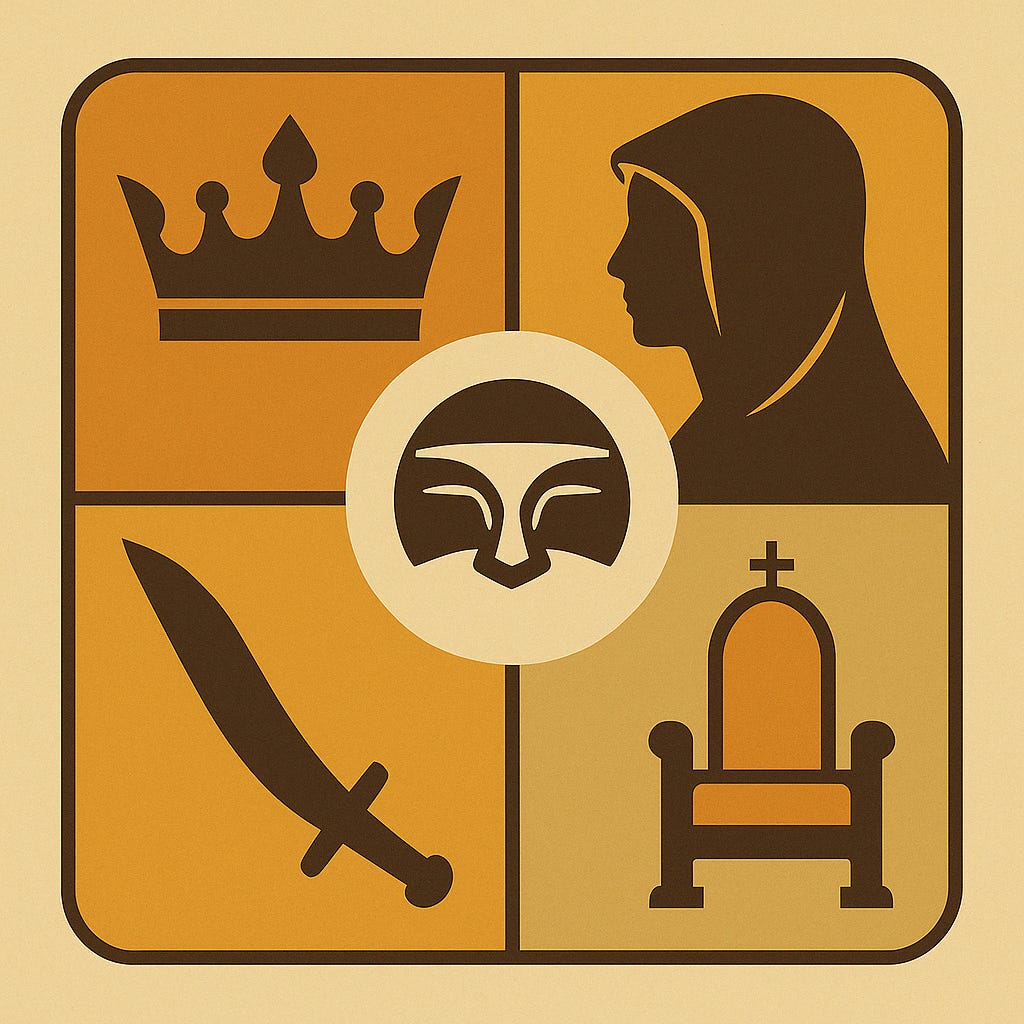Frank Herbert's Dune
A Parable of the Final Modern War
Desert Thrones: An Introduction
Frank Herbert Through the Fire of Scripture
“He who controls the spice controls the universe.”
– Frank Herbert, Dune
Frank Herbert’s Dune is not just a science fiction epic—it is a mythopoeic monument, a parable carved in the dust of the 20th century’s spiritual exhaustion. To read Herbert well is to know that he saw the old world dying. To interpret him rightly is to recognize that he feared what might replace it.
This week’s series here at RevFisk.com will tug on the thread of Desert Thrones: A Parable of the Final War. This is not merely a theological commentary on Dune as a novel, but an engagment to intentionally call the question on Herbert’s dream—a dream within the unshakable frame rooted in the inevitability of JIHAD,
Though limited by his time and lack of true biblical scope—it must be recognized that Dune captured a vision of our age: none can name nor tame the King.
Why Dune? Why Now?
Since its publication in 1965, Dune has become one of the most read, analyzed, and echoed science fiction texts in modern history. It is no exaggeration to say that its world-building shaped the imagination of everything from Star Warsto The Matrix to Game of Thrones. And yet, its deepest impact lies not in its story—but in its questions:
What happens when religion is used as a tool of empire?
What is the cost of prophecy fulfilled without repentance?
Can human history be guided by prescient design—or only by mercy?
What happens when we finally meet the “messiah” we demanded?
In Dune, these questions are posed through the lens of ecology, mysticism, politics, and warfare. But beneath all of them lies a theological wound: the longing for salvation without the cross.
The Literary Scope of Herbert’s Work
Herbert’s strength was never simply the story. It was the structure of myth he built from fractured pieces:
Islamic eschatology and Mahdist prophecy.
Christian language transposed through Nietzschean suspicion.
Zen-Buddhist emptiness posing as wisdom.
Genetic determinism masquerading as divine right.
Guilds of travel replacing priesthoods of prayer.
He built a sand-castle gospel—one that mirrored the structures of the ancient world, yet refused the name of Jesus Christ. His world rings with the truths of spiritual yearning, but its altar is empty.
And for that reason, it remains the perfect modern parable.
The Purpose of This Series
This series is not an attempt to baptize Dune.
It is an attempt to reclaim the dream it almost dreamed.
We interpret each key element through a scriptural lens.
We align Herbert’s archetypes with real-world counterparts: banks, crowns, empires, churches, deserts, and sietches.
We honor his insight—but surpass his solution.
This is not just a critique of Dune.
It is a mirror for the age.
And it is a call to the remnant:
to rise not with jihad, but with joy;
to conquer not with prophecy, but with the Word;
to follow not a messiah of bloodlust, but the Lamb who was slain.
Style and Symbolism: Why These Sigils?
Each chapter in this series is accompanied by a modern, minimalist poster-sigil, inspired by mid-century propaganda art and desert iconography. These are not mere illustrations—they are memory seals, designed to:
Hold the concept in the eye and hand,
Burn the archetype into thought,
Equip the saints with language and icon.
The visual style borrows from Dune’s vintage origins, filtered through the lens of clarity and confrontation. These aren’t sand-dusted dreams. These are banners for the final war.
Let the Reader Understand
Frank Herbert saw what was coming. But he didn’t know the end. He gave us a Muad’dib. But we await a King. So let the spice flow—but let the Word reign. Let the desert burn—but let Zion sing. Let the myths play—but let the truth stand forever.
This is the parable of the final war from the vantage of Fremen settled in the Sietch of Little America, watching and praying as thrones, dominions and powers vie for the right to lie the loudest to the world. Stay tuned…



